Trade Show Marketing for Dummies Part I: Measuring the Value of Events
As many of you know, trade shows and conferences are a critical component to a well-balanced marketing mix for most life sciences companies. These events can be a great tool for engaging a captive audience of relevant academic and industrial prospects who have gathered to share their research and learn what others are doing. I typically get out to four or five of these shows every year to support clients, but I always take time to walk the show floor to look for trends and new ideas.
Exhibits are not inexpensive and ultimately they require significant marketing budget to be effective. Due to this cost, it shocks me when I see how few companies actually review their events to determine their value relative to their business. Every company should conduct an annual review of all their trade shows and conferences to determine resource allocation, how much support will be needed from internal stakeholders, and which underperforming events should be skipped altogether.
So, how to measure the value of your events? There are some very basic metrics that you should know about every show in which you invest your marketing dollars. Some of these can come even before the event takes place.
Attendance – When was the last time you looked at the raw number of attendees for a show relative to your costs to exhibit? Is this number trending up or down the last few years? I would also try to find out what percentage of the attendees are exhibitors and students. You might even be able to break the attendees out by core segments pertaining to your business. Most shows have an exhibitor prospectus with this type of information. If that isn’t available, request info for pre-show mailings. Often times they’ll give you nice breakdowns here.
Qualified Leads – I don’t mean every business card dropped in a fish bowl to win the latest Apple product. Those are not leads. Those are “Tschotske Trolls,” who would try to swipe your entire booth if it wasn’t too large for them to carry. Qualified leads are the attendees who take the time to talk to you and have a current or future need for your product or service. Sure, this seems obvious, but do you actually look at the number of real leads from your trade shows? Perhaps you can even quantify the relative value of each lead. How does this compare to previous years at the event? If you are really on top of your game, you can even track leads to sales and go back to attribute a dollar amount to the event.
Cost to Lead Ratio – The key metric I like to use is the total cost divided by the number of qualified leads, and I don’t just mean the registration and exhibition costs. Include your shiny new booth, furniture rental, labor, travel, meals, accommodations and anything else you spent related to the event. Is this number more than $300? A lot more? If your primary driver for exhibiting is lead generation and this is the case, you might want to do something different or consider reallocng the budget. Do you know your average cost per lead for other tactics? You should really get an idea for these figures. This is especially easy to determine for search engine marketing and email marketing. Everyone asks us where they should spend their marketing dollars. Finding out what areas drive the most sales (or at least quality leads) is a great place to start.
If you are doing some or all of this already, you get a Chempetitive Group gold star! If not, I would urge you to start and try to get any historical data still available. If you look at the numbers and things aren’t looking good for some shows that you really think are important for your business, I have two suggestions for you. Maybe the show’s value is in brand awareness or nurturing relationships with your existing clients rather than lead generation.
In part two of this series, I will offer some tips on how to get the most out of your trade show budget by maximizing your promotional effectiveness.
